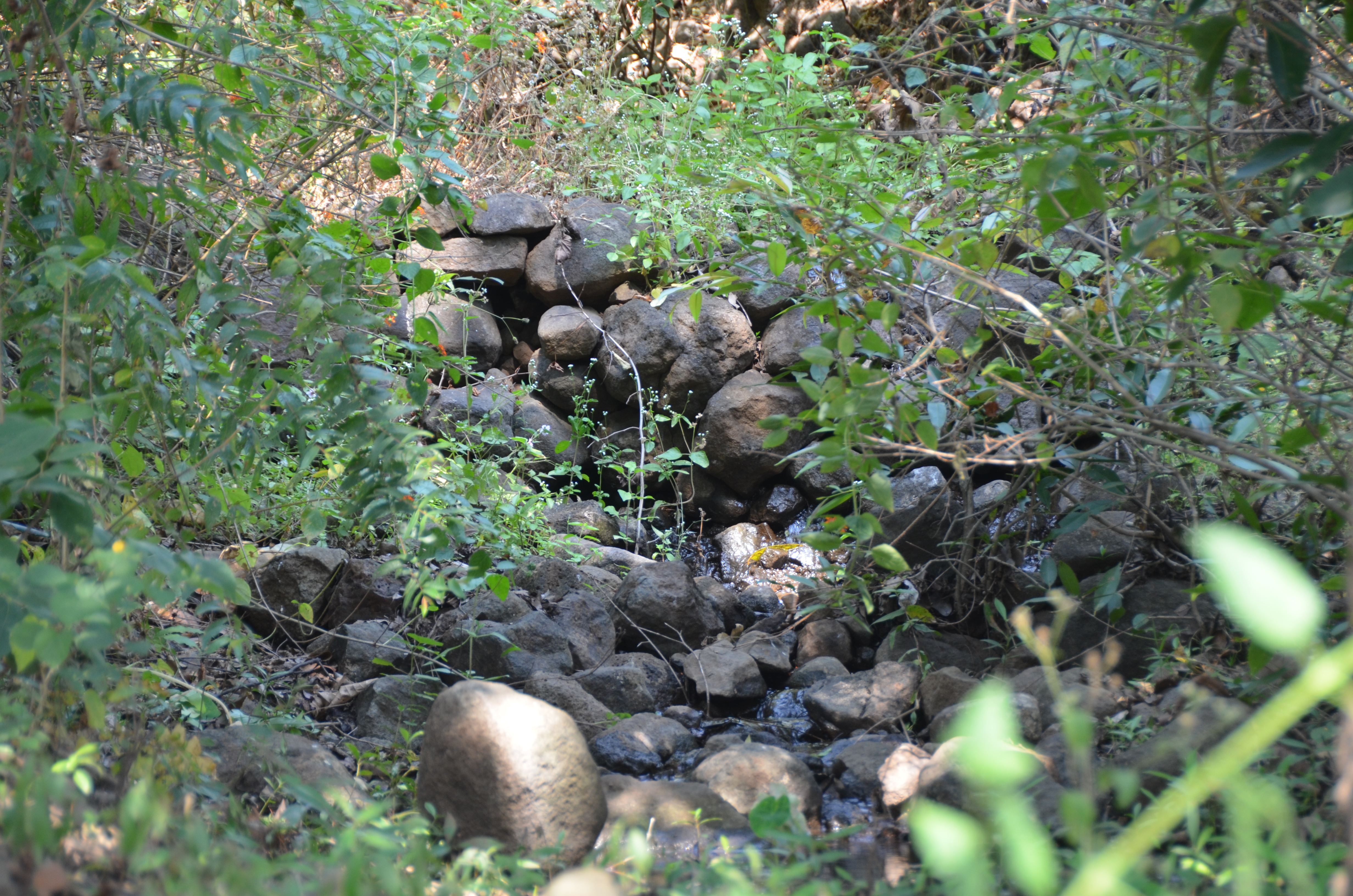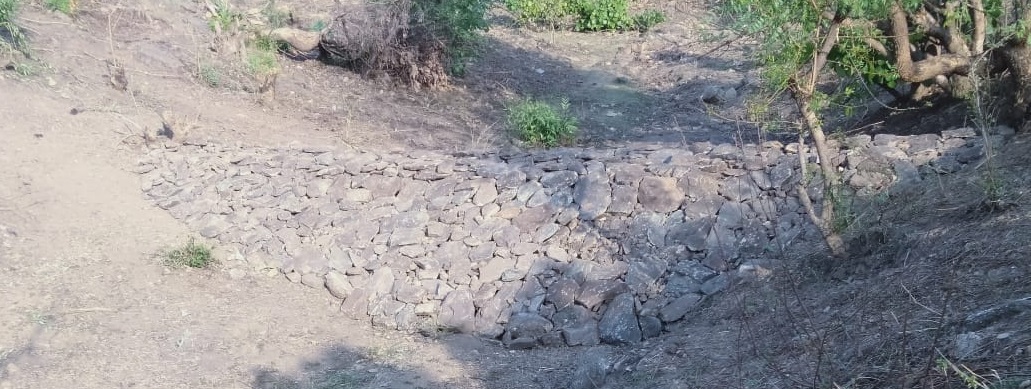By Harshal Khade & Anshuman Panda
Photo Credits – Haraprasad Roul, Brahmadas Bairagi, Akhilesh Kumar Bairagi, Mohan Dhuldhar and Amol Satpute
The watershed is the catchment area or a basin that drains into a common outlet i.e. an area where the rainwater drains through gullies, nallas etc. to a single outlet. Its development is nothing but the conservation, regeneration and the optimum use of natural resources. Watershed development has different components which are interrelated — community development, Soil and Water Conservation (SWC), afforestation and so on.
The basic principle of SWC is to use and treat the land accordingly to economically sustain available water resources.
Loose Boulder Structures (LBS) are one of the most important drainage line treatments. In this photo essay, we shall find out more about this simple but effective innovation. As the name suggests, LBS is made up of loosely arranged boulders so as to arrest excess erosion and water loss during the rainy season.
Karan Pathar village, Pushparajgarh block, Anuppur district, Madhya Pradesh
LBS acts as a speed-breaker that reduces the speed of the water flow, when it rains heavily. It slows down the water, reduces soil erosion and arrests the loss of fertile soil usually washed away.

A loose boulder structure in Biribadia village in Chikiti block, Ganjam, Odisha.

Karan Pathar village, Pushparajgarh block, Anuppur district, Madhya Pradesh

The LBS pictured above was made in Palaspani village, Chhindwara Madhya Pradesh.
LBS are built at short intervals in a sequence so that they collectively and efficiently serve as a mechanism helping in groundwater regeneration as and when it rains.

A Loose Boulder Structure being constructed in Balipadar village, Chikiti block, Ganjam district, Odisha
This summer, in Biribadia village, 27 labourers were engaged in the construction of 14 Loose Boulder Structures that took 242 days. Pictured above in the background is Haraprasad Roul of WOTR taking measurements of the structure. The top width of the structure is 1 metre, less than the bottom width.

Construction of a Loose Boulder Structure in progress.

This LBS is built in Deonala Mal village, Chhindwara, Madhya Pradesh.
LBS is built in a gully, stream or nala through which the rainwater flows. Two key prerequisites for building LBS are: easy availability of loose boulders and a gully or nala with a loose bottom, that is not rocky – so that stones could be placed after digging the ground. The slope of the gully is also taken into account.

LBS in Devnala Rayyat, village in Padhurna block, Chhindwara district, Madhya Pradesh

In Balidapar village, Chikiti block, Ganjam, 41 of these structures were constructed in a series over a number of nalas in 2020. In a typical LBS structure, irregular and oddly shaped stones interlock with other stones and the gaps between them are filled with smaller stones.

LBS in Devnala Rayyat, village in Padhurna block, Chhindwara district, Madhya Pradesh

Balipadar village, Chikiti block, Ganjam district, Odisha
LBS will reduce the velocity of runoff in the upper catchment. Other long term benefits are recharge of the groundwater table and increased water availability in the ponds and wells that are further downstream.








